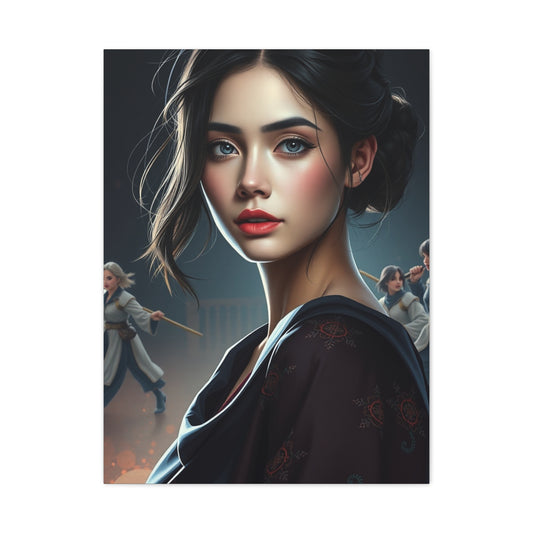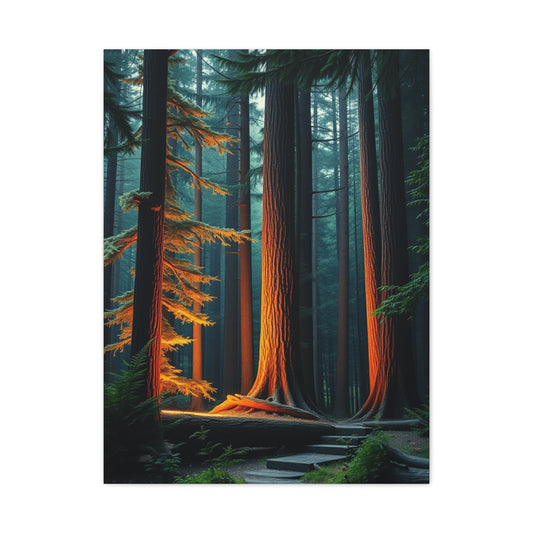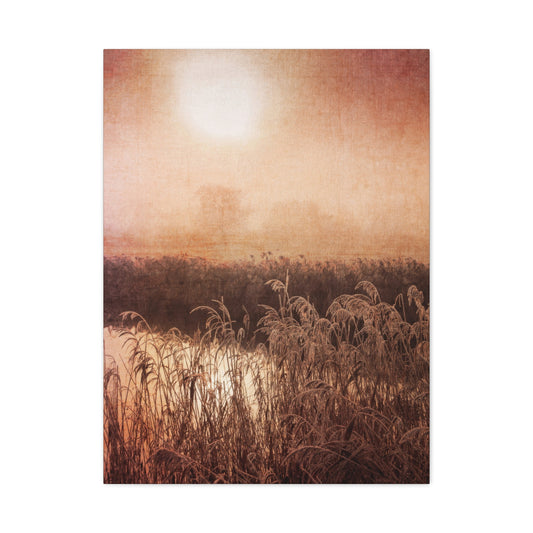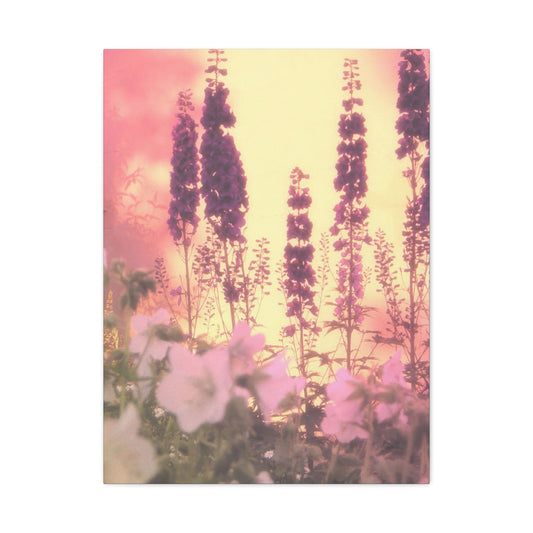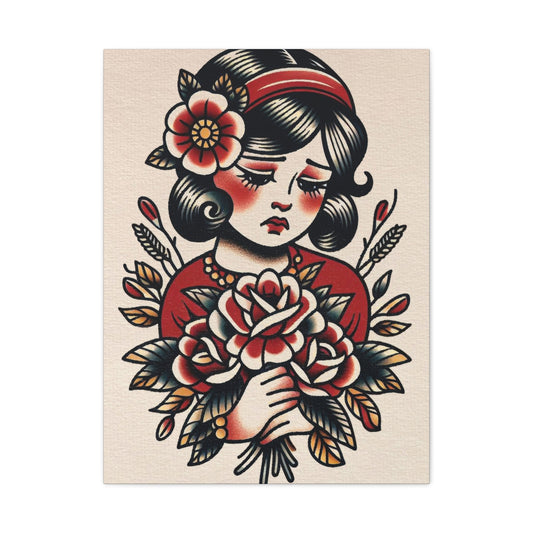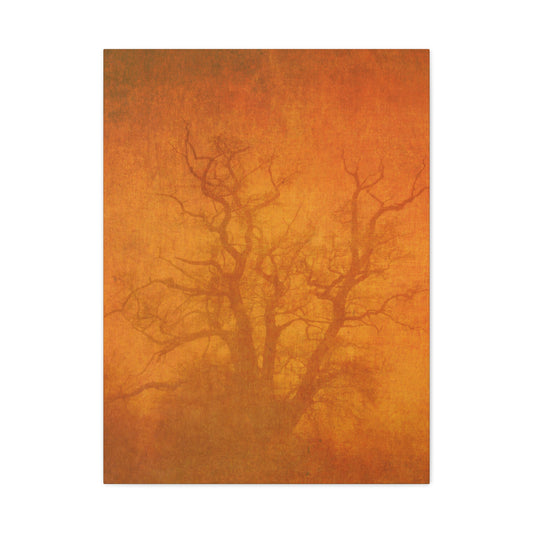-
Rihannas Timeless Beauty Canvas Wall Art & Canvas Print
Regular price From $141.23 USDRegular priceUnit price per -
Seraphic Beauty Canvas Wall Art & Canvas Print
Regular price From $141.23 USDRegular priceUnit price per -
Ballad of Beauty Canvas Wall Art & Canvas Print
Regular price From $141.23 USDRegular priceUnit price per -
Primeval Beauty Wall Art Wall Art & Canvas Print
Regular price From $141.23 USDRegular priceUnit price per -
Ascending Beauty Canvas Wall Art & Canvas Print
Regular price From $141.23 USDRegular priceUnit price per -
Golden Autumn Haze Wall Art & Canvas Prints
Regular price From $149.88 USDRegular priceUnit price per -
Ickworth House Wall Art & Canvas Prints
Regular price From $149.88 USDRegular priceUnit price per -
Lakeside Manor Wall Art & Canvas Prints
Regular price From $149.88 USDRegular priceUnit price per -
Frosty Dawn Wall Art & Canvas Prints
Regular price From $149.88 USDRegular priceUnit price per -
Thatched Cottage Dream Wall Art & Canvas Prints
Regular price From $149.88 USDRegular priceUnit price per -
Thatched Tudor Cottage Wall Art & Canvas Prints
Regular price From $149.88 USDRegular priceUnit price per -
Golden Hour Marsh Wall Art & Canvas Prints
Regular price From $141.23 USDRegular priceUnit price per -
Forgotten Voyage Wall Art & Canvas Prints
Regular price From $141.23 USDRegular priceUnit price per -
Reflections in Stone Wall Art & Canvas Prints
Regular price From $141.23 USDRegular priceUnit price per -
Purple Spires Wall Art & Canvas Prints
Regular price From $141.23 USDRegular priceUnit price per -
Vintage Beauty Wall Art & Canvas Prints
Regular price From $141.23 USDRegular priceUnit price per -
Autumn's Twilight Wall Art & Canvas Prints
Regular price From $141.23 USDRegular priceUnit price per -
Floral Symphony Wall Art & Canvas Prints
Regular price From $141.23 USDRegular priceUnit price per -
Ethereal Blossoms Wall Art & Canvas Prints
Regular price From $141.23 USDRegular priceUnit price per -
Pink Petals in Motion Wall Art & Canvas Prints
Regular price From $141.23 USDRegular priceUnit price per -
Blooming Shadows Wall Art & Canvas Prints
Regular price From $141.23 USDRegular priceUnit price per -
Blue and Gold Bouquet Wall Art & Canvas Prints
Regular price From $141.23 USDRegular priceUnit price per -
Luminous Petals Wall Art & Canvas Prints
Regular price From $141.23 USDRegular priceUnit price per -
Turquoise Dreams Wall Art & Canvas Prints
Regular price From $141.23 USDRegular priceUnit price per -
Floral Shadows Wall Art & Canvas Prints
Regular price From $141.23 USDRegular priceUnit price per -
Ephemeral Blooms Wall Art & Canvas Prints
Regular price From $141.23 USDRegular priceUnit price per -
Floral Explosion Wall Art & Canvas Prints
Regular price From $149.88 USDRegular priceUnit price per -
Blue Petals Wall Art & Canvas Prints
Regular price From $149.88 USDRegular priceUnit price per -
Golden Blooms at Twilight Wall Art & Canvas Prints
Regular price From $149.88 USDRegular priceUnit price per -
Vibrant Petals Wall Art & Canvas Prints
Regular price From $149.88 USDRegular priceUnit price per -
Copper Patina Wall Art & Canvas Prints
Regular price From $141.23 USDRegular priceUnit price per -
Floating Harmony Wall Art & Canvas Prints
Regular price From $141.23 USDRegular priceUnit price per -
Earth's Palette Wall Art & Canvas Prints
Regular price From $141.23 USDRegular priceUnit price per -
Teal Vortex Wall Art & Canvas Prints
Regular price From $141.23 USDRegular priceUnit price per -
Golden Wings Wall Art & Canvas Prints
Regular price From $149.88 USDRegular priceUnit price per -
Teal Rust Reverie Wall Art & Canvas Prints
Regular price From $149.88 USDRegular priceUnit price per -
Daisy Elegance Wall Art & Canvas Prints
Regular price From $141.23 USDRegular priceUnit price per -
Golden Leaves and Feathers Wall Art & Canvas Prints
Regular price From $141.23 USDRegular priceUnit price per -
Peony Perfection Wall Art & Canvas Prints
Regular price From $141.23 USDRegular priceUnit price per -
Misty Mountain Majesty Wall Art & Canvas Prints
Regular price From $149.88 USDRegular priceUnit price per -
Misty Morning Wall Art & Canvas Prints
Regular price From $149.88 USDRegular priceUnit price per -
Autumn's Reflection Wall Art & Canvas Prints
Regular price From $141.23 USDRegular priceUnit price per
Elevate Your Interior Spaces with the Charm and Significance of Beauty Wall Art
Walking into a space that feels uninspiring can significantly affect your mood, productivity, and overall sense of well-being. A lackluster room—whether in a home, office, or creative studio—can suppress creativity and leave the environment feeling cold and impersonal. Interiors are more than just functional spaces; they are canvases for personal expression, mood enhancement, and aesthetic delight. One of the most transformative tools for achieving this is canvas wall art. Canvas wall art goes beyond simple decoration—it serves as a medium to convey emotion, tell a story, and create a focal point that draws attention and admiration.
The beauty of canvas wall art lies in its versatility. From large-scale abstract pieces that command attention to subtle, minimalist designs that evoke calm and serenity, there is a style to suit every taste and interior theme. Intricate paintings, vibrant color splashes, and innovative sculptures have the ability to transform blank walls into dynamic visual narratives that spark conversation and inspiration. Unlike generic décor items, canvas art is deeply personal. It reflects the owner’s personality, interests, and aesthetic sensibilities, allowing spaces to feel curated rather than randomly decorated. For instance, a landscape painting can bring the serenity of nature indoors, while bold geometric abstractions can energize a modern office setting.
Furthermore, canvas wall art contributes not only to visual appeal but also to the emotional atmosphere of a room. Art has the unique ability to evoke feelings, stimulate memories, and even influence productivity and focus. In a home office, a thoughtfully chosen piece can inspire creativity and reduce stress. In a living room or bedroom, it can create warmth, comfort, and a sense of belonging. The scale, placement, and color palette of wall art can be strategically selected to complement existing décor, balance spatial proportions, and enhance natural light, creating a harmonious and visually pleasing environment.
The tactile quality of canvas also adds an element of depth and texture that other wall coverings or prints often lack. The richness of the paint, the texture of the canvas, and the subtle interplay of light on the surface make the artwork come alive, adding sophistication and elegance to the room. Beyond traditional paintings, modern canvas art can include mixed media, 3D elements, and even personalized pieces that carry sentimental value, transforming spaces into immersive experiences rather than mere functional areas.
In addition, canvas wall art is remarkably adaptable. It can fit any room, from a cozy reading nook to a grand living area, and it can evolve with your style over time. Changing a piece of wall art is often easier and more impactful than renovating walls or furniture, making it an ideal solution for those seeking a quick, visually striking upgrade. By curating a selection of artworks that resonate with your personality and aesthetic preferences, you can create spaces that are not only visually stimulating but also emotionally fulfilling, reflecting the unique character of everyone who inhabits them.
In essence, canvas wall art is much more than decoration—it is an investment in the mood, functionality, and soul of a room. It bridges the gap between artistry and everyday living, elevating interiors into inspiring, expressive, and immersive environments. Whether through bold statements or subtle elegance, canvas wall art transforms walls from mere surfaces into captivating visual experiences that enhance every aspect of life within the space.
Exploring the Variety of Wall Art Options
Wall art is more than just decoration; it serves as a visual anchor that can define the character, tone, and energy of any space. From homes to offices, galleries to cafes, the right wall art can transform a blank surface into a captivating focal point, reflecting personality, creativity, and aesthetic sensibilities. The variety of wall art available today is immense, and understanding the nuances of each type can help in creating spaces that are harmonious, stimulating, or serene, depending on your intention.
One of the most popular forms of wall art is canvas paintings. These range from classical oil paintings to modern abstract pieces. Canvas art provides a tactile, textured surface that adds depth and dimension to walls, giving a room a sophisticated, gallery-like ambiance. Large canvas pieces can serve as the centerpiece of a living room or office, while smaller canvases arranged in a gallery wall can tell a narrative or highlight a theme. Beyond visual appeal, the material itself—stretched fabric over a frame—offers versatility in placement and durability.
Framed prints and posters are another versatile option. They are often more accessible than original paintings but can still make a strong statement. These pieces can feature reproductions of famous artworks, photography, or original designs. By carefully choosing frames, mats, and layouts, framed prints can seamlessly integrate with both traditional and contemporary interiors. For instance, a minimalist black-and-white photograph in a sleek frame can elevate a modern living room, while ornate frames can enhance classical or vintage-inspired spaces.
For those who desire a more three-dimensional effect, sculptural wall art provides a dynamic alternative. Made from materials such as metal, wood, or ceramics, sculptural pieces introduce texture and shadow, adding movement and tactile interest. They can range from intricate metal wall hangings to large wooden reliefs, and they are particularly effective in entryways, hallways, or spaces that benefit from an artistic centerpiece.
Another increasingly popular category is mixed media and digital wall art. These works combine multiple materials—such as paint, fabric, and paper—or integrate digital prints and interactive elements. Mixed media pieces are ideal for expressing creativity in unique ways, allowing for bold, unconventional designs that become conversation starters. Similarly, digital art and prints can incorporate vibrant colors, patterns, or even augmented reality features, appealing to modern, tech-savvy audiences.
Finally, wall murals and decals offer a flexible, often temporary solution for transforming walls. Murals can cover entire walls with scenes, abstract patterns, or thematic visuals, completely changing the perception of a space. Decals, on the other hand, provide an easy-to-install and removable option, perfect for renters or those who frequently like to refresh their environment.
The type of wall art selected directly influences a room’s atmosphere. Soft landscapes and pastel-colored canvases can instill calmness and serenity, ideal for bedrooms or meditation areas. Bold, geometric abstracts or vibrant photographic prints can energize a space, making them perfect for offices or creative studios. Thought-provoking pieces with layered textures or symbolic imagery invite contemplation, enriching living areas or study rooms.
Paintings: The Timeless Heart of Wall Decor
Paintings remain a staple in interior design, celebrated for their versatility and emotional depth. Artists employ various mediums such as oil, acrylic, and watercolor to produce works that range from abstract to realistic. Abstract paintings convey moods and ideas through form and color, while representational art captures landscapes, portraits, or cultural scenes. Paintings can be scaled to dominate a wall or arranged as smaller groupings for subtle sophistication. The right painting provides a focal point, enhancing the room’s ambiance and reflecting the owner’s personal aesthetic.
Prints: Affordable Artistic Alternatives
For those seeking quality without the cost of originals, prints provide a practical solution. Advances in digital printing allow for high-fidelity reproductions that preserve color, detail, and texture. Canvas prints, giclée reproductions, and posters are versatile and can be displayed singly or in curated arrangements. Prints allow flexibility, enabling homeowners to refresh their interiors easily and explore multiple artistic styles without permanent commitment.
Sculptural and Three-Dimensional Art
Three-dimensional wall art introduces texture, depth, and tactile interest to interiors. Sculptures crafted from metal, wood, resin, or mixed media can act as statement pieces, transforming flat walls into dynamic visual experiences. These artworks interact with light and shadow, creating a sense of movement and adding an extra dimension to the décor. Sculptural installations also enhance thematic cohesion, complementing furniture and decorative accents.
How to Select Wall Art That Elevates Your Home
Wall art is one of the most versatile tools in interior design, capable of transforming a room from ordinary to extraordinary with careful selection and placement. Each interior style—whether modern, traditional, bohemian, minimalist, or eclectic—has unique characteristics, and choosing wall art that aligns with these aesthetics is essential to create a harmonious space. By understanding the nuances of different design styles, homeowners can use art strategically to enhance ambiance, express personality, and achieve visual balance.
In modern interiors, the emphasis is often on clean lines, simplicity, and functionality. Wall art in these spaces should complement this streamlined aesthetic. Large, abstract paintings or geometric prints work well because they create focal points without overwhelming the room. Minimalist color palettes—such as monochromatic shades or muted tones—allow the artwork to stand out subtly. Metal wall sculptures or black-and-white photography can also reinforce the sleek and uncluttered feel that modern interiors typically aim for. Placement is crucial; artwork is often centered above furniture pieces, creating symmetry that enhances the room’s orderly layout.
For traditional interiors, which often feature rich textures, classic furniture, and ornate detailing, wall art should echo the elegance of the setting. Framed oil paintings, classical landscapes, or portraits can enhance the timeless atmosphere. Intricately designed frames in gold, bronze, or wood finishes add to the room’s sophisticated charm. Traditional interiors also benefit from gallery walls or carefully layered arrangements, where multiple pieces complement one another and the surrounding décor. In these spaces, art is not just decoration but a continuation of the room’s historical and cultural narrative.
Bohemian interiors embrace freedom, creativity, and eclecticism, making them ideal for mixing colors, textures, and styles of wall art. Tapestries, handcrafted pieces, and vibrant prints can coexist beautifully in a single space. Unlike the rigid symmetry of modern or traditional styles, bohemian design encourages asymmetry and layering. Here, wall art can also incorporate personal mementos or travel souvenirs, adding a unique, story-driven element to the décor. The combination of textures, patterns, and cultural influences makes the walls themselves an artistic statement.
In minimalist interiors, the mantra “less is more” guides the use of wall art. In these spaces, a single, thoughtfully chosen piece can create significant visual impact. Artwork with subtle textures, muted colors, or abstract compositions can add depth without disrupting the minimalist balance. Negative space is essential in these rooms, so leaving ample blank wall areas around the art ensures it commands attention and maintains the room’s airy and uncluttered aesthetic.
Finally, eclectic interiors thrive on mixing and matching styles, eras, and materials. Wall art in these spaces often serves as a bridge between contrasting elements, tying together diverse furniture, colors, and textures. Bold paintings, vintage posters, and contemporary sculptures can coexist harmoniously when thoughtfully curated. The key is intentionality: even in seemingly chaotic arrangements, color schemes, thematic links, or repeated motifs can create cohesion.
Integrating wall art into different interior design styles requires more than just picking beautiful pieces. It demands an understanding of the room’s overall mood, scale, and color palette. When executed thoughtfully, wall art not only enhances aesthetic appeal but also creates emotional resonance, turning walls into canvases of personal expression and elevating the living experience.
Evaluate Your Room and Layout
Begin by assessing your space, considering dimensions, natural lighting, and furniture placement. Large artworks can overwhelm smaller rooms, while smaller pieces may get lost in expansive areas. Understanding the scale and proportion of your room ensures balance and visual appeal. The function of each space also matters: calming landscapes suit bedrooms, energetic abstracts complement creative workspaces, and neutral-toned pieces enhance offices.
Identify Your Personal Style
Wall art is an expression of individuality. Reflect on the aesthetics that resonate with you, whether it’s bold modern abstractions, serene nature-inspired paintings, or culturally rich motifs. Knowing your preferences simplifies the selection process and allows you to curate a cohesive and meaningful collection.
Harmonize With Interior Themes
Matching wall art to the room’s overall design style creates visual continuity. Coastal-inspired interiors may benefit from beach landscapes and nautical prints, whereas industrial-themed spaces complement metallic sculptures or urban photography. When the art aligns with the interior theme, it enhances harmony and elevates sophistication.
Integrating Wall Art into Different Interior Design Styles
Wall art is more than just decoration—it serves as a bridge between the space and the personality of those who inhabit it. The way artwork is incorporated into a room can dramatically influence the overall aesthetic, transforming a simple wall into a captivating focal point. However, the integration of wall art is not a one-size-fits-all approach. Each interior design style has its own visual language, and selecting pieces that align with these styles is key to achieving a cohesive and harmonious look.
In modern interiors, clean lines, neutral tones, and minimalistic furniture dominate the space. Wall art in these environments often takes the form of abstract paintings, geometric prints, or large-scale photography. The key here is to maintain simplicity while making a bold statement. For instance, a single large canvas with striking shapes or vibrant color contrasts can become the centerpiece of a living room without overwhelming the understated décor.
Contemporary styles, while similar to modern design, offer more flexibility and fluidity. Art in contemporary spaces can include mixed media, sculptural wall pieces, or dynamic digital prints. These pieces often serve to inject personality and energy into the room, complementing the sleek furniture and open layouts characteristic of contemporary interiors. Layering smaller artworks in a gallery-style arrangement can also create visual interest while preserving the airy feel of the room.
In traditional interiors, wall art often draws on classical themes and techniques, such as oil paintings, landscapes, or portraiture. Rich textures, ornate frames, and deep, warm colors help to reinforce the elegance and formality of traditional décor. Placement is crucial—artwork is usually centered over key furniture pieces, like a mantel, sideboard, or bed, ensuring balance and proportion within the room. Symmetry and thoughtful spacing amplify the sense of refinement.
Bohemian or eclectic styles thrive on creativity and personal expression. Wall art in these interiors can range from hand-painted murals and tapestry pieces to cultural artifacts and vintage posters. The focus is on layering textures, colors, and patterns in a way that feels spontaneous yet intentional. Mixing different types of art—such as a vibrant painting alongside a woven wall hanging—can reflect the homeowner’s personality while maintaining visual cohesion through complementary hues or recurring motifs.
Industrial and loft-style interiors, characterized by exposed brick, metal accents, and raw materials, benefit from bold, edgy artwork. Large-scale urban photography, abstract metal sculptures, or even graffiti-inspired pieces can enhance the rugged, utilitarian vibe. In these settings, wall art often acts as a counterbalance to the starkness of the space, introducing warmth, color, or narrative depth.
No matter the style, successful integration of wall art also depends on scale, proportion, and placement. Oversized pieces can anchor a room, while smaller works can create visual rhythm through grouping. Considering the color palette of both the art and the surrounding décor ensures harmony, while thoughtful lighting can further highlight textures and details, making the artwork truly shine.
Ultimately, integrating wall art is about aligning the visual language of the piece with the overall design of the space. By understanding the distinct characteristics of each interior style, homeowners can select and arrange artworks that not only complement their décor but also reflect individuality, creating interiors that feel both aesthetically pleasing and uniquely personal.
Modern Interiors
Modern design focuses on clean lines, minimalism, and functionality. Art in these spaces should provide contrast without clutter, using geometric abstracts, monochromatic photography, or bold patterns. Properly placed, art becomes a statement element that enlivens minimalist spaces while maintaining elegance.
Bohemian Interiors
Bohemian interiors embrace color, texture, and eclectic layering. Here, wall art thrives on variety: tapestries, vibrant paintings, photographs, and small sculptures can be combined for a dynamic visual experience. Natural materials like macramé, woven textiles, and wood accents further enrich the space, making it expressive and inviting.
Minimalist Interiors
Minimalist spaces prioritize simplicity and clarity. Wall art should be subtle yet purposeful, using soft color palettes, gentle textures, and understated compositions. Minimalist art enhances serenity and balance, ensuring the room maintains its open and uncluttered feel.
Creative DIY Wall Art for a Personal Touch
Wall art is often seen as a finishing touch in interior design, but it can also be a powerful medium for personal expression. Customizing your own wall art allows homeowners to inject personality, sentiment, and creativity into their living spaces, transforming ordinary walls into galleries that tell a story. DIY projects not only offer a sense of accomplishment but also create pieces that are truly one-of-a-kind, reflecting the individuality and tastes of the people who live in the home.
One of the most appealing aspects of DIY wall art is its affordability. Professional artwork or large framed prints can be expensive, whereas creating your own piece can be both cost-effective and rewarding. Materials like canvas, wood panels, reclaimed objects, or even fabric can serve as canvases for creativity. With basic tools such as paints, brushes, stencils, or markers, homeowners can craft pieces that are visually striking without breaking the budget. Moreover, DIY projects allow for experimentation with colors, textures, and dimensions that might not be available in ready-made artwork.
DIY wall art also encourages experimentation and creativity. Abstract painting techniques, geometric designs, or hand-lettered quotes are popular ways to make walls come alive. Collages made from photographs, magazine clippings, or family mementos can add layers of personal meaning. For those who enjoy three-dimensional art, sculptural pieces or mixed-media installations can add texture and depth, making the wall not just decorative but interactive. Even simple projects like string art or painted wooden signs can add charm and character to otherwise plain walls.
Another significant benefit of creating your own wall art is the opportunity to reflect personal stories and experiences. Custom pieces can commemorate family milestones, travels, or meaningful quotes. For example, a framed map with pins marking favorite destinations or a canvas filled with personal photographs can evoke memories and spark conversation. DIY wall art transforms décor into a living narrative, making your home feel intimate, welcoming, and distinctly yours.
DIY projects are also versatile enough to adapt to any interior design style. In minimalist interiors, a single, elegantly painted canvas with clean lines can enhance the room’s serene aesthetic. For bohemian or eclectic spaces, layering vibrant colors, textures, and unconventional materials can create a playful and dynamic focal point. Even in modern or industrial settings, abstract DIY pieces with metallic paints, concrete textures, or bold geometric patterns can complement the sleek, structured environment while adding a unique touch.
Furthermore, engaging in DIY wall art can be a therapeutic and fulfilling activity. The creative process offers stress relief, encourages mindfulness, and provides a tangible sense of accomplishment. It is an opportunity to explore personal interests, artistic skills, and color preferences, all while crafting something that will enhance your living space.
Ultimately, DIY wall art is more than just decoration; it is a medium for self-expression, creativity, and storytelling. By creating pieces that reflect personal taste and experiences, homeowners can infuse their interiors with originality, character, and warmth. These unique creations ensure that every wall tells a story, making the home not just a place to live, but a space that truly feels personal and inspiring.
Hand-Painted Canvas Art
Creating hand-painted canvases provides freedom to explore abstract compositions, structured patterns, or thematic designs. Using acrylics, brushes, and stencils, you can craft artworks that resonate with your personal aesthetic. These pieces often serve as conversation starters while transforming a wall into a personalized focal point.
Photo Collages and Memory Displays
Photo collages are a versatile way to showcase cherished memories. Combining photographs with decorative papers, stickers, or other embellishments creates dynamic, visually engaging walls. Collages allow for flexibility in design, whether arranged symmetrically for formal elegance or asymmetrically for a relaxed, eclectic feel.
Where to Source Affordable and High-Quality Wall Art
Decorating your home or workspace with wall art can completely transform the atmosphere, yet many people assume that high-quality art comes with a hefty price tag. Fortunately, this is a misconception. With a strategic approach and careful planning, it is entirely possible to source wall art that is both visually striking and budget-friendly. The key lies in knowing where to look, understanding different types of art, and being open to creative options.
One of the most accessible sources for affordable art is online marketplaces. Websites like Etsy, Saatchi Art, and even Amazon feature a wide range of independent artists offering original paintings, prints, and digital designs at various price points. Purchasing directly from artists often allows you to negotiate prices or opt for smaller prints of larger works, providing a high-quality piece without breaking the bank. Additionally, these platforms provide the opportunity to acquire unique, often one-of-a-kind works that can serve as conversation starters in any room.
Local art fairs and craft markets are another excellent avenue. These venues often showcase emerging artists whose work is priced far below gallery standards. Attending such events not only gives you access to affordable art but also allows you to meet the creators in person, gaining insight into their creative process. Building a relationship with local artists can lead to future commissions or discounts, allowing you to expand your collection gradually.
For those seeking timeless and classic options, print shops and online print-on-demand services offer reproductions of famous artworks or custom digital designs. These prints can be framed or mounted to look just as polished as original pieces, often at a fraction of the cost. Services like Society6 and Redbubble allow you to choose from a broad range of designs, from abstract compositions to modern photography, giving your walls an artistic flair without overspending.
Another overlooked source of affordable art is thrift stores, estate sales, and auctions. Many second-hand stores carry hidden gems in the form of paintings, vintage prints, or limited-edition posters. Estate sales can be especially rewarding for collectors seeking unusual or historical pieces, often priced lower than their perceived value. A keen eye and some patience can lead to stunning finds that add character and sophistication to your space.
Online Art Marketplaces
Digital platforms provide access to diverse artists offering original and reproduced artworks in various sizes, styles, and mediums. These marketplaces simplify the process of finding pieces that align with your interior design vision, enabling convenient browsing and ordering from home.
Local Thrift Stores and Markets
Thrift stores and flea markets offer hidden gems, including vintage paintings, prints, and unique decorative items. Exploring these spaces often yields high-quality art at affordable prices, adding character and a sense of discovery to your décor.
DIY and Personal Creations
Creating your own art can be both cost-effective and meaningful. Utilizing simple supplies like canvas, paints, and stencils, homeowners can design pieces that perfectly match their style and room dimensions. DIY art projects also provide the satisfaction of personal involvement in transforming a living space.
Conclusion:
Incorporating wall art into interior design is far more than a simple decorative decision; it is a profound strategy that can entirely redefine a living space, both visually and emotionally. Wall art possesses the remarkable ability to transform interiors from ordinary to extraordinary, creating environments that inspire creativity, foster comfort, and convey a distinct sense of individuality. Whether through vibrant paintings, intricate prints, three-dimensional sculptures, or personalized DIY creations, the possibilities for enriching interiors with wall art are virtually limitless, offering homeowners tools to express personal style, amplify mood, and elevate the overall design of their spaces.
At the heart of its transformative power is the role of art as a focal point. Well-chosen wall art naturally draws attention, anchoring a room and providing a visual centerpiece around which other design elements can harmonize. For example, a large abstract painting in a living room can inject energy and movement into a neutral color palette, while a series of small, framed prints can create rhythm and narrative along a hallway wall. In bedrooms, calming landscapes or subtle watercolors can promote serenity, while bold, graphic pieces in a home office can inspire productivity and focus. In essence, wall art serves as both a structural and emotional element, balancing proportions, enhancing spatial flow, and adding layers of meaning to the interior.
The versatility of wall art extends beyond aesthetic impact. Artworks introduce color, texture, and dimension, complementing or contrasting with existing furniture, fabrics, and architectural elements. For instance, metallic sculptures or textured canvases can create visual depth in minimalist spaces, while colorful, eclectic prints can add vibrancy to bohemian interiors. Even subtle shifts, such as incorporating monochromatic pieces into a modern, Scandinavian-style room, can dramatically alter the perception of space, light, and mood. This adaptability allows homeowners to curate environments that are both visually harmonious and emotionally resonant, reinforcing the intended ambiance of each room.
Wall art also functions as a vehicle for personal expression and storytelling. Each piece communicates a narrative—whether it is a reflection of cultural heritage, personal memories, or artistic taste. By thoughtfully selecting artworks that align with their lifestyle and values, homeowners transform walls into platforms for self-expression. This principle is particularly evident in gallery-style arrangements, where a combination of family photographs, travel-inspired prints, and abstract artworks can weave together a visual autobiography. Personalized or DIY art projects further enhance this connection, enabling individuals to embed their own creativity and meaning directly into their home décor. For example, a custom-painted canvas or a handmade collage crafted from memorable photographs can turn an ordinary wall into a deeply personal, emotionally charged focal point.
Accessibility to high-quality wall art has also improved dramatically, making it possible for homeowners to create these expressive environments without straining budgets. Online marketplaces, local craft fairs, thrift stores, and print-on-demand services all offer avenues for sourcing affordable, distinctive art. Independent artists and emerging creatives often provide pieces that rival traditional gallery works in quality and originality, while allowing for flexibility in size, medium, and customization. This democratization of art empowers homeowners to experiment with different styles, mix mediums, and curate collections that are truly unique. Furthermore, DIY techniques and printable art files allow for limitless personalization, making it easier than ever to align pieces with specific color schemes, room functions, and interior design philosophies.
Wall art is also integral to the psychological and emotional experience of a space. Research in environmental psychology suggests that the presence of aesthetically pleasing elements can reduce stress, enhance mood, and even influence creativity and productivity. For example, a serene landscape in a bedroom can induce relaxation and restorative sleep, while a bold, energetic abstract painting in a living area can foster conversation and social engagement. Sculptures or three-dimensional art installations, meanwhile, invite tactile interaction and visual curiosity, making the environment more dynamic and stimulating. By strategically selecting and placing art, homeowners can shape the emotional impact of each room, creating spaces that do not merely house daily activities but actively enhance well-being and inspiration.
Additionally, wall art plays a crucial role in reinforcing design themes and spatial cohesion. Whether the interior leans toward modern minimalism, rustic charm, industrial loft aesthetics, or eclectic bohemian vibrancy, the right artworks can accentuate the style and bring disparate elements together. A minimalist space benefits from carefully curated monochrome prints or subtle textures, while a Mediterranean-style home thrives with vibrant landscapes, intricate patterns, and rich color palettes. The strategic combination of size, scale, and placement ensures that each piece complements the architectural and decorative framework, transforming walls from blank surfaces into intentional, harmonious components of the design narrative.
Wall art also encourages experimentation and creative risk-taking. Unlike permanent structural changes or costly renovations, adding or swapping artworks is flexible, low-risk, and instantly transformative. A statement piece can redefine an entire room’s character, while seasonal or rotating displays allow for continuous evolution of style. This adaptability empowers homeowners to explore trends, celebrate changing tastes, or simply refresh their environment without committing to permanent alterations.
Ultimately, the integration of wall art transcends decoration; it cultivates an emotional and aesthetic connection between inhabitants and their surroundings. Each piece contributes to a dialogue within the space, reflecting personal history, artistic appreciation, and imaginative expression. Whether opting for gallery walls, singular statement pieces, sculptures, or custom DIY creations, homeowners are able to transform ordinary interiors into compelling, multi-dimensional environments that engage the senses, inspire creativity, and convey identity.
Investing in thoughtfully curated or self-created art is therefore not just about enhancing visual appeal—it is about cultivating spaces that are meaningful, immersive, and expressive. From modern sophistication and minimalist serenity to bohemian vibrancy and eclectic charm, wall art provides the tools to harmonize style, emotion, and narrative, turning every interior into a sanctuary of beauty, individuality, and inspiration. With strategic sourcing, creative exploration, and a focus on personal expression, walls become living canvases, continuously enriching daily life while elevating the artistry of the home.
In conclusion, wall art is the bridge between design and self-expression, offering limitless opportunities to transform interiors into evocative, aesthetically pleasing, and emotionally resonant spaces. By selecting pieces thoughtfully, integrating diverse textures and styles, and embracing affordable and DIY options, homeowners can craft interiors that are not only visually stunning but deeply personal, creating environments that are as inspiring as they are functional. Every wall, no matter its size or location, becomes a testament to creativity, individuality, and the transformative power of art.


